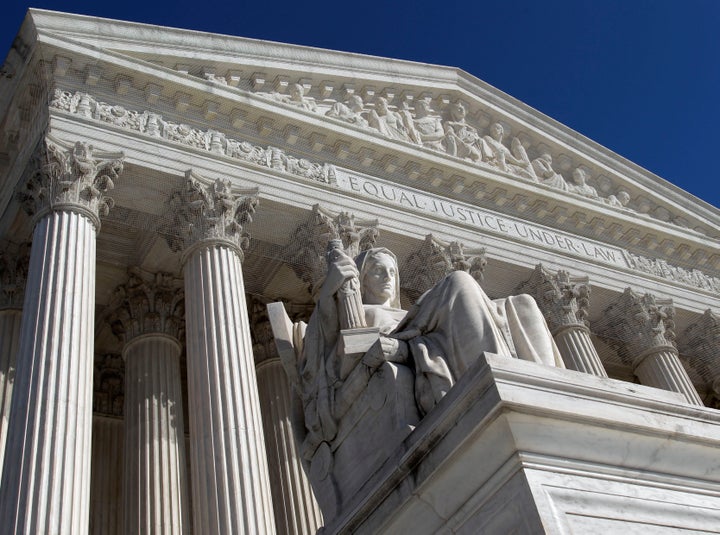
In a continuing series of posts, Lyle Denniston provides responses based on the Constitution and its history to public statements about the meaning of the Constitution and what duties it imposes or rights it protects. Today's topic: the "ministerial exception" to anti-discrimination laws.
The statement at issue:
"Clergy who are fired for reasons unrelated to matters of theology -- no matter how capricious or venal those reasons may be -- have just had the courthouse door slammed in their faces."
- The Rev. Barry W. Lynn, executive director of Americans United for Separation of Church and State, in a January 11 press release that was quoted in various news media, commenting on the Supreme Court decision that day in Hosanna-Tabor Evangelical Lutheran Church and School v. Equal Employment Opportunity Commission.
We checked the Constitution, and...
Although phrased in rather alarmist tones, the Rev. Lynn's comment is partly correct, but only if two things are kept in mind. First, the word "clergy" is essential to any understanding of what the Supreme Court did in the Hosanna-Tabor case, because that word has a special meaning in the Court's constitutional perception. Second, the Rev. Lynn significantly overstated what the Court decided. Nuance and qualification are often a part of major Court rulings, and they do limit outcomes.
This is a decision primarily about spiritual leaders within a religious organization, those who -- in the words of Chief Justice John G. Roberts, Jr. -- "guide it on its way." Its immediate impact is not on employees whose jobs do not involve them as spiritual guides. Future cases, of course, may show that the guidance function reaches well down into the ranks of employees at churches, synagogues, and mosques, but that was not established in this initial decision.
Even so, there is no doubt that this was a ruling of fundamental importance in the never-ending debate in America over the degrees of separation between religion and government (there are only degrees of separation, not total; defining the degrees is the hard part). While lower courts for years have often recognized a "ministerial exception" to federal, state and local laws against discrimination in the workplace, the Supreme Court itself had never done so. Although bold in some ways, the decision was, in fact, quite cautious.
The Chief Justice's opinion emphasizes repeatedly that the central question before the Court was the government's "role in filling ecclesiastical offices." The Court said that the two parts of the First Amendment dealing with religion -- the Establishment Clause and the Free Exercise Clause -- bar the government "from appointing ministers" and "from interfering with the freedom of religious groups to select their own."
As Roberts recounted English and American history, and especially U.S. constitutional history, the focus remained on what might be called the pastoral function -- ministering to the faith's followers in a religious sense. And when the Court turned its attention to the specific church employee in the case -- a parochial school teacher who had complained of discrimination in her congregation in Redford, Mich. -- its focus was on two facets of her situation. First was the fact that she held a religious office, which she began performing after what amounted to ordination, following explicitly religious training. Second was the fact that, although much of her time teaching was spent on subjects other than religion, she did perform explicitly religious duties.
What that means, of course, is that -- at a minimum -- the Court has left for another day the legal rights of church employees like the staff secretary, the custodian, the gardener, the mechanical staff, and so on, down in the ranks. True, it is quite possible that, with the "ministerial exception" now firmly in place, religious organizations will argue that anyone on their staff is there to advance the mission. There has been some tendency in that direction in lower courts, where the "ministerial exception" has been recognized since 1972.
But this is where other parts of the Roberts opinion will come into play. The Court has not, in fact, "slammed the courthouse door." No member of the Court argued that everyone who works for a religious organization, high or low in the hierarchy, is completely barred from suing over a workplace complaint. The decision assigns to a court in such cases the task of weighing the organization's claim to the "ministerial exception." And, it appears, merely claiming the exception is not enough (although it would have been enough for one member of the Court, Justice Clarence Thomas, but no one else joined in that view).
The opinion also spells out a wide range of legal complaints that the Court did not rule out: claims of criminal conduct; a claim of retaliation for reporting a crime (such as sex abuse); a claim of race, sex or ethnic bias not related to religion; or a variety of civil law claims such as violating the terms of a contract or maintaining unsafe working conditions. At a minimum, a religious organization faced with any of those types of claims would have to prove that the incident actually involved a matter of faith -- very likely, a formidable task.